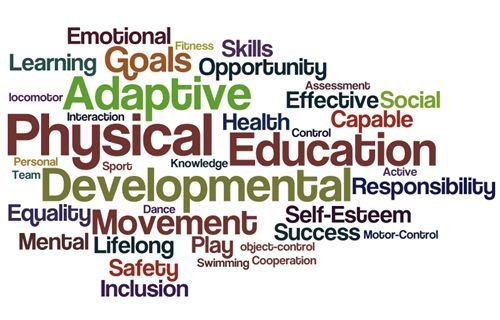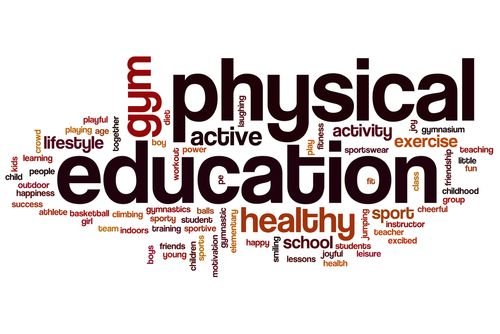Physical education (PE) has been a part of school curriculums for decades, but as schools face funding cuts and prioritize academic subjects, its value is increasingly questioned. With limited time and resources, some wonder if PE is essential or merely an add-on to academic education. Proponents argue that PE is critical for student health, social development, and mental well-being, while others believe it may detract from core academic focus. Exploring the impact and benefits of PE can help determine whether it should be a standard part of education or a luxury that schools can afford to skip.
The Role of Physical Education in Student Health
One of the most recognized benefits of PE is its contribution to student health. With concerns over rising obesity rates and related health issues, PE provides an opportunity for students to engage in physical activity during the school day. Regular exercise improves cardiovascular health, builds muscle strength, and enhances flexibility. PE encourages students to develop active lifestyles that can reduce health risks in adulthood. For many students, school may be their only opportunity for structured exercise, underscoring the need for PE as a foundation for lifelong health.
Physical Education and Academic Performance
Physical activity has been linked to improved academic performance. Studies show that exercise boosts blood flow to the brain, enhancing cognitive function, concentration, and memory retention. PE classes, therefore, may not only contribute to physical health but also support academic success. By improving concentration and reducing stress, PE can help students return to the classroom refreshed and ready to learn. Many schools report that students who participate in regular PE perform better academically, supporting the view that PE is a necessity rather than a luxury.

Physical Education’s Role in Mental Health
PE plays a significant role in promoting mental well-being. Exercise is known to release endorphins, chemicals in the brain that reduce stress and enhance mood. In a time when mental health issues are prevalent among students, PE provides a structured way to alleviate stress and anxiety. For students facing academic and social pressures, physical activity serves as an outlet for releasing tension, improving mood, and increasing resilience. The mental health benefits of PE add weight to the argument that it is a necessity in education.
Social Skills and Teamwork
PE classes offer a unique environment for developing social skills and learning teamwork. Through sports and group activities, students learn to communicate, collaborate, and develop empathy. These skills are valuable not only in school but also in personal and professional settings. PE encourages students to respect others, practice fair play, and develop leadership qualities. For students who may not thrive in traditional academic subjects, PE can be a place to build confidence and find their strengths. These social benefits highlight PE’s role in preparing students for life beyond the classroom.
Building Self-Discipline and Resilience
PE instills qualities like self-discipline and resilience. Sports and physical activities often require practice, persistence, and dedication. Students learn to set goals, face challenges, and work toward improvement, developing a growth mindset. This discipline extends beyond PE, impacting students’ attitudes toward academics and personal goals. PE teaches students that progress takes effort, a lesson that can be applied in many areas of life. The resilience built in PE classes helps students tackle academic and personal challenges with confidence, reinforcing the necessity of physical education.
Physical Education and Lifestyle Choices
Physical education shapes students’ attitudes toward health and fitness, influencing their lifestyle choices. By learning about exercise, nutrition, and personal health, students gain knowledge they can apply throughout their lives. PE classes encourage students to see exercise as a regular part of life rather than a chore, fostering a positive attitude toward fitness. For students who might otherwise be sedentary, PE can be the first step toward adopting an active lifestyle. This emphasis on lifelong fitness makes a strong case for including physical education as a necessary part of education.
Physical Education in the Digital Age
As technology becomes more integrated into daily life, students are increasingly exposed to sedentary activities. Many spend hours each day on screens, whether for entertainment or study. Physical education provides a necessary counterbalance, encouraging students to step away from screens and engage in physical activity. In a digital age where physical inactivity is a growing concern, PE classes serve as a reminder of the importance of movement. Ensuring that students have a structured time for physical activity can help combat the negative effects of excessive screen time and promote a healthy balance.
Financial Considerations and Resource Allocation
One argument against physical education is the cost associated with providing it. PE classes require equipment, facilities, and trained instructors, which can strain school budgets. In some cases, schools have had to reduce or eliminate PE to allocate funds toward core subjects. However, the long-term health benefits and reduced healthcare costs associated with regular physical activity make a compelling financial case for maintaining PE. The question then becomes whether the cost savings of cutting PE outweigh the potential health and academic benefits it provides. This debate is central to understanding whether PE should be considered a necessity or a luxury.
Physical Education: A Foundation for Future Success
For many students, physical education builds a foundation that supports success in various areas of life. The skills, habits, and attitudes developed in PE classes—such as teamwork, discipline, and an appreciation for fitness—can have lasting impacts. Whether they pursue athletics or not, students carry the benefits of physical education into adulthood, often making healthier lifestyle choices and demonstrating resilience. As schools aim to prepare students for life beyond academics, PE plays a vital role in shaping well-rounded individuals capable of handling diverse challenges.
Conclusion
Physical education classes offer numerous benefits that go beyond physical fitness, contributing to mental health, social skills, and academic success. While budget constraints and academic pressures may lead some to question the necessity of PE, the advantages it provides make a compelling case for its inclusion in the curriculum. From fostering teamwork and resilience to promoting lifelong health, physical education is much more than an optional subject. For students and society alike, the benefits of physical education suggest that it is indeed a necessity rather than a luxury. Prioritizing PE in schools can help create healthier, happier, and more balanced individuals equipped to thrive in all aspects of life.






2 Comments
Pingback: The Impact of Technology on Learning - Yashi Digital Education
Pingback: Project-Based Learning: A Modern Approach to Education - Yashi Digital Education